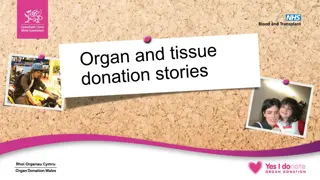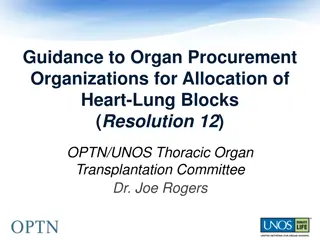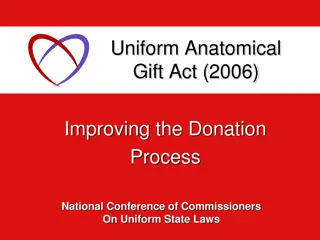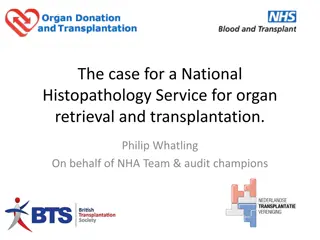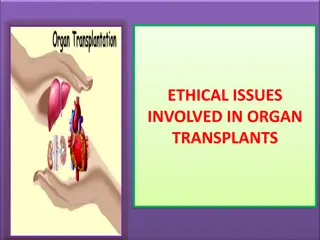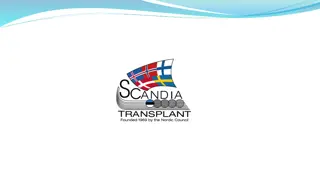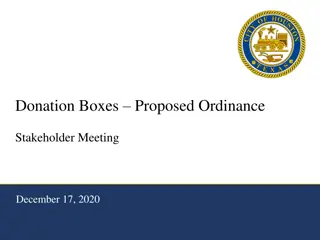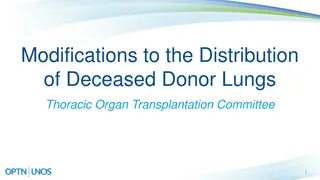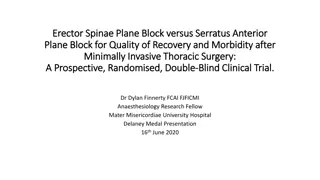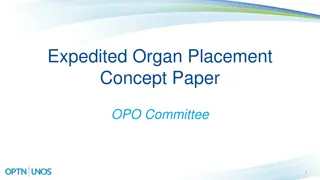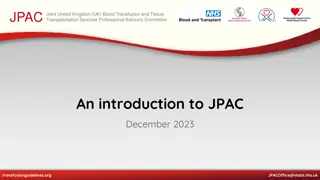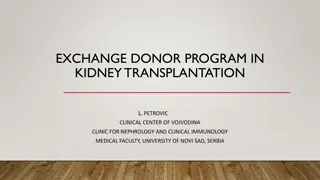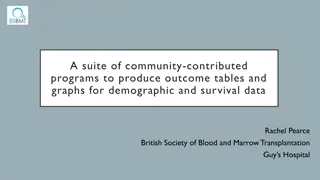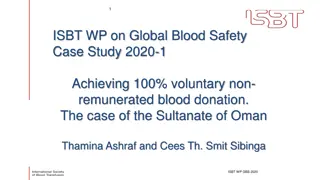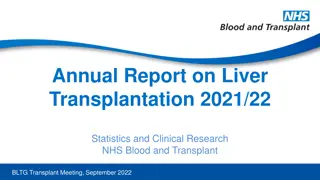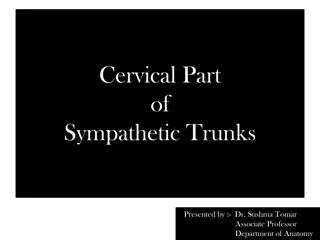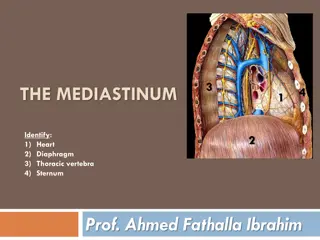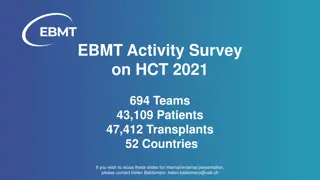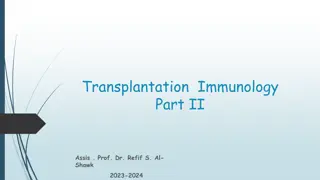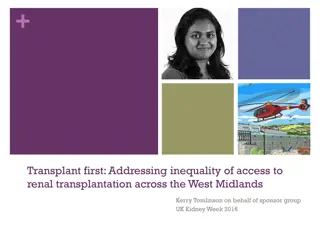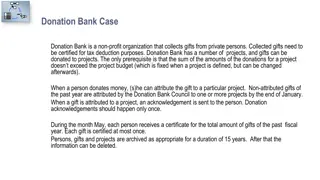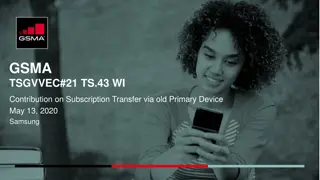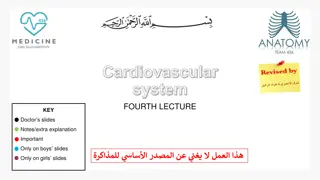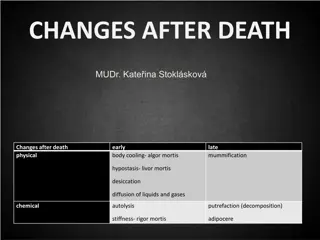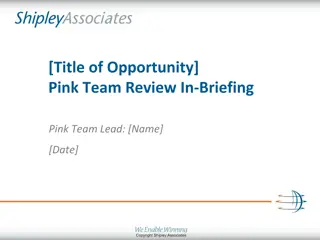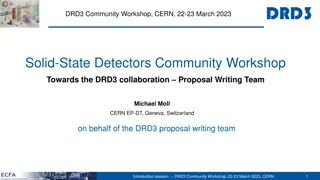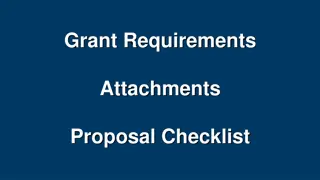Proposal to Remove Donation Service Areas in Thoracic Organ Transplantation
The proposal aims to ensure compliance with regulations by eliminating Donation Service Areas (DSAs) in thoracic organ allocation policies. The suggested solutions involve replacing DSAs with a 250 NM distance from the donor hospital, removing language allowing prioritization of sensitize heart candidates, and replacing zones with actual distances. Evidence supports this change for better organ utilization, patient access, and efficient organ placement. Implementation involves longer travel distances for surgical teams and changes in organ allocation by Organ Procurement Organizations (OPOs). The OPTN committee plans to make recommendations and updates in heart and lung allocation policies. Feedback is sought regarding the proposed distance of 250 NM for thoracic distribution.
Download Presentation

Please find below an Image/Link to download the presentation.
The content on the website is provided AS IS for your information and personal use only. It may not be sold, licensed, or shared on other websites without obtaining consent from the author. Download presentation by click this link. If you encounter any issues during the download, it is possible that the publisher has removed the file from their server.
E N D
Presentation Transcript
Eliminate the Use of Donation Service Areas (DSAs) in Thoracic Distribution Thoracic Organ Transplantation Committee Spring 2019 1
What problem will the proposal solve? Ensure compliance with the Final Rule by removing DSA from heart allocation policy 2
What are the proposed solutions? Replace DSA with a 250 NM distance from donor hospital Remove policy language that permits prioritization of a sensitized heart candidate Remove the term zone from OPTN policy and replace it with actual distances 3
Supporting Evidence per the Final Rule Based in sound medical judgement Data driven: modeling, literature, expert and stakeholder input Seeks to achieve the best use of donated organs and promote patient access to transplantation Measured by waitlist mortality and transplant counts Promote the efficient management of organ placement Measured by travel time and costs 4
How will members implement this proposal? Transplant Hospitals Surgical teams may be required to travel farther distances to recover organs OPOs OPOs may allocate organs to candidates who are farther away from the donor hospital 5
How will the OPTN implement this proposal? Committee will make recommendations to Board at June 2019 meeting UNet Programming Changes: Update adult and pediatric heart match allocations to replace DSA with 250 nautical mile distance Update lung allocation policy to remove references to zone in classification titles 6
Is the Committee seeking feedback Would members recommend an alternative distance for thoracic distribution, versus the proposed distance of 250 NM? If so, what distance do you recommend and what evidence justifies this distance? 7
Supporting Evidence The Committee determined that replacing DSA with a 500 nautical mile allocation unit would not result in more consistency with the Final Rule The Committee cited potential decreased system efficiency, decreased utilization, and poorer post-transplant outcomes resulting from the following: Longer median travel times Increased reliance on air travel Higher likelihood of ischemic times exceeding four hours 10


